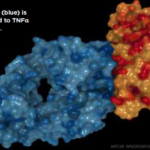As the supply drops, the demand increases—and with that demand, the amount that a company may be willing to charge. The benefits of competition are realized only when multiple companies are competing. When only two or three companies manufacture a given drug, substantially less pressure exists to drive down the cost of that drug.
That much seems logical. When you look at individual examples, however, some increases defy logic. In 2013, for example, the price of 500 tablets of doxycycline went from $20 to $1,849. The Government Accountability Office noted that more than 3,000 generic drugs had at least one price increase of over 100% between 2010 and 2015.14 In some cases, a price increased more than 1,000% in a single year.
This piqued the interest of federal prosecutors, who have been examining the generic drug industry for evidence of collusion. Forty-five state attorneys general, led by Connecticut’s attorney general, have filed suit in federal court against multiple drug manufacturing companies alleging price fixing. Michael Cole, head of antitrust litigation in the office of the Connecticut Attorney General, says, “The companies would work out in advance who would get the lowest price and then the other competitors would put in what we would call a cover bid.”15 This preserved the appearance of a competitive marketplace, without any of the financial risk. The suit alleges that records subpoenaed from 2012 to 2015 show that the price of generics had been set by consensus among competitors in many cases, which is an obvious violation of the public trust and, of course, the law.
The fallout is just starting. Past executives at Heritage Pharmaceuticals, former CEO Jeffrey A. Glazer and former Senior Vice President Jason T. Malek, have admitted to antitrust violations, which led to—among other consequences—the surge in the price of doxycycline I mentioned earlier. They are now shining a light on other industry practices that will likely result in additional indictments.16
Class action lawyers are already lining up clients, including retail pharmacies and insurance companies, that may have been harmed as a consequence of price fixing. Makan Delrahim, the head of the U.S. Department of Justice’s antitrust division, has also made it clear the government is wondering how many of your tax dollars may have been lost as a result of collusion. He notes, “To the extent that taxpayers have had to pay that bill, I think that the taxpayers should recover. And we will get involved on the civil side and recover damages for the U.S. government.”14 Those damages, collectively, are now estimated to be somewhere between $1 billion and $5 billion.



